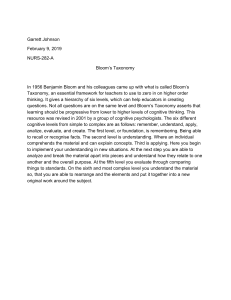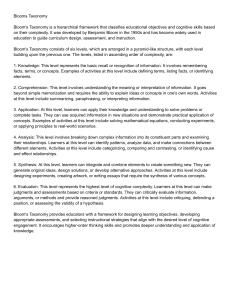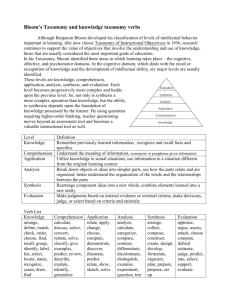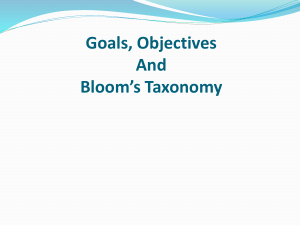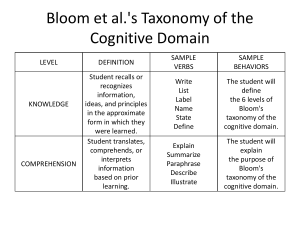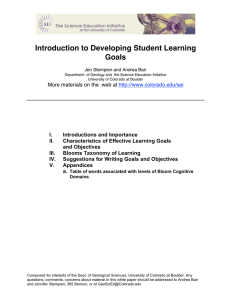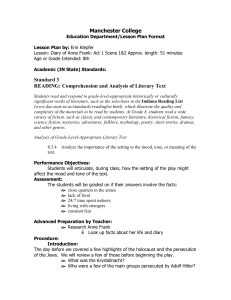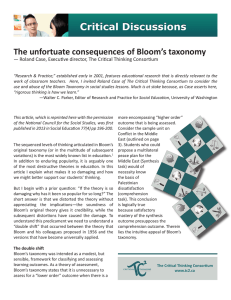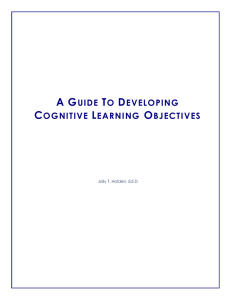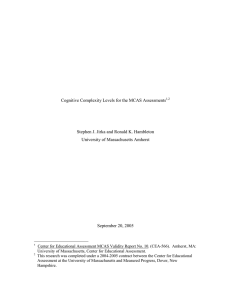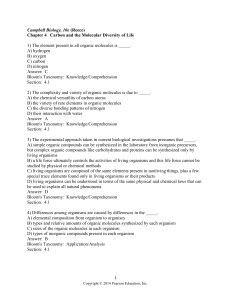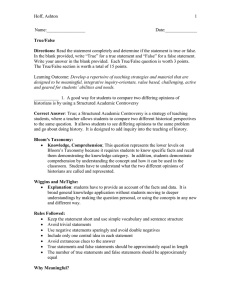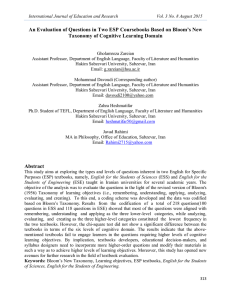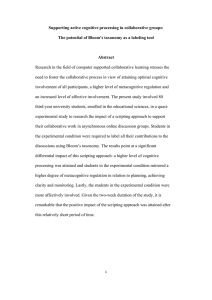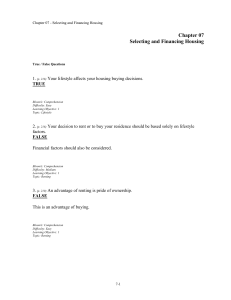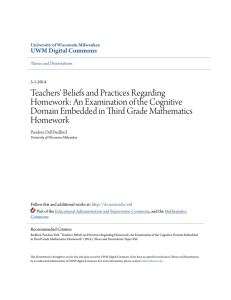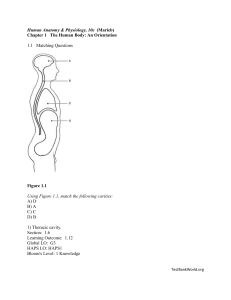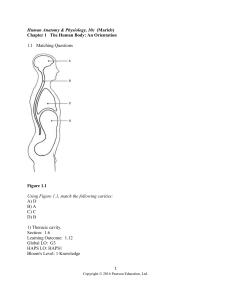Bloom's Taxonomy.doc
advertisement
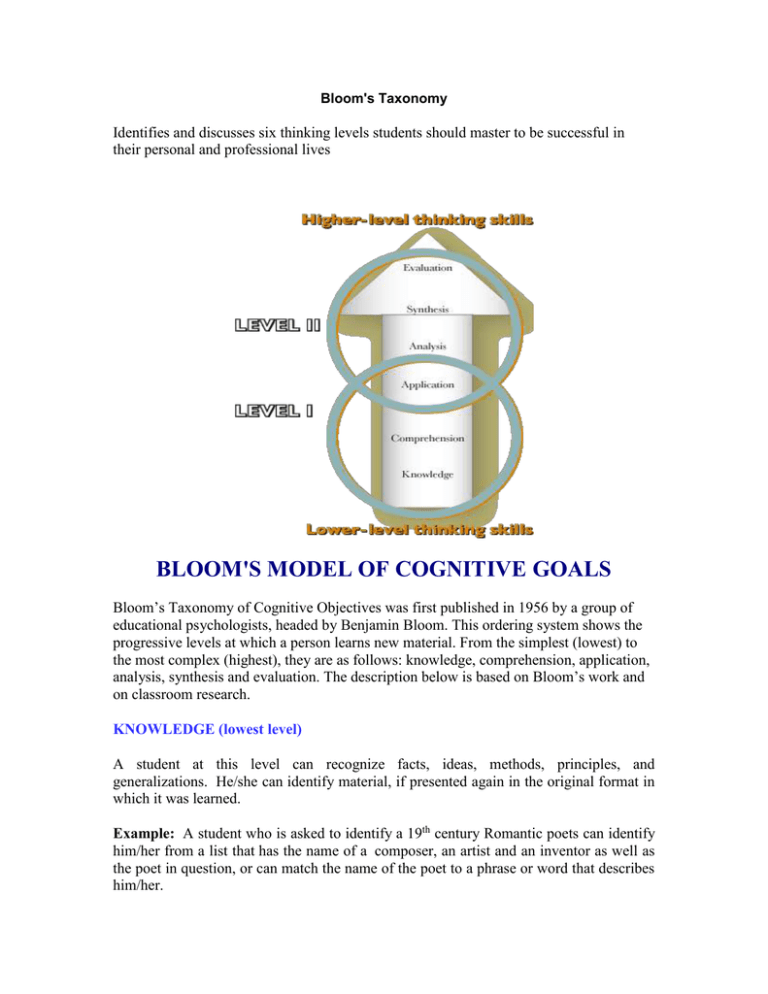
Bloom's Taxonomy Identifies and discusses six thinking levels students should master to be successful in their personal and professional lives BLOOM'S MODEL OF COGNITIVE GOALS Bloom’s Taxonomy of Cognitive Objectives was first published in 1956 by a group of educational psychologists, headed by Benjamin Bloom. This ordering system shows the progressive levels at which a person learns new material. From the simplest (lowest) to the most complex (highest), they are as follows: knowledge, comprehension, application, analysis, synthesis and evaluation. The description below is based on Bloom’s work and on classroom research. KNOWLEDGE (lowest level) A student at this level can recognize facts, ideas, methods, principles, and generalizations. He/she can identify material, if presented again in the original format in which it was learned. Example: A student who is asked to identify a 19th century Romantic poets can identify him/her from a list that has the name of a composer, an artist and an inventor as well as the poet in question, or can match the name of the poet to a phrase or word that describes him/her. COMPREHENSION Material at this level can be recited, listed, or recreated, often in the student’s own words. A student understands directions, written communication, tables, charts, and diagrams. Example: A student who has learned about 20th century U. S. presidents at this level can write out the names of five of them on an exam question that asks for a list he/she or can write out a description (in his/her own words) of each man's political beliefs and leadership styles. Note: Students at this level must be supplied with a cue, or they cannot recall the information. This student often thinks, "I know the answer, but now I have temporarily forgotten it; it is on the tip of my tongue." APPLICATION Students at this level can connect ideas, procedures, methods, formulas, theories, and principles to a new situation they have not encountered. This means students must understand and provide a situation or a specific example, which links textbook knowledge ( general) with something in the "real world (specific.) Example: A student who has read two opposing views on global warming can point out specific examples in today's society to substantiate or invalidate an author's view. ANALYSIS Students at this level can take apart the elements of a complex topic, breaking them into components that can be seen and studied independently from the other parts. Example: A story consists of many elements: situation, conflict, struggle, outcome, meaning, point of view, and dialogue. Each is an integral part of the whole. To demonstrate that students really understand a story, they must understand and recognize these elements and state how they contribute to the work. SYNTHESIS Students who learn material at this level can carry out analyses between categories that are different and reassemble the component parts in new and creative ways. Example: A student who is asked to compare the work of a particular philosopher and a particular artist in the 17th century may realize—for the first time, for this student—that both had been deeply affected by political and social movements in the time that strongly affected their works. If this topic had been discussed in class, then the question is merely on the comprehension or knowledge level, depending on its formulation. Synthesis requires a student to do creative thinking. EVALUATION (highest level) Students at this level can judge the value of ideas, works, solutions, and methods, using prescribed criteria for estimating their effectiveness. Example: When essays are submitted, students receive a grade, based on certain criteria: content, organization, sentences, word use, and mechanics. The course grade is divided into various parts, each of which is a certain percentage of the whole. People who are adept at this level can become empowered. SOURCE: Taxonomy of Educational Objectives, Handbook 1: Cognitive Domain


